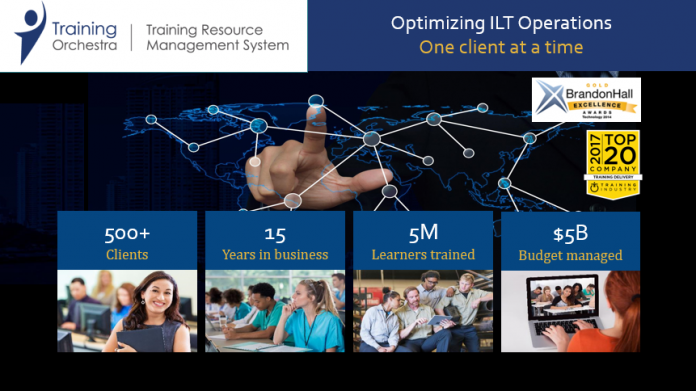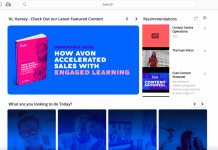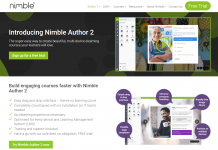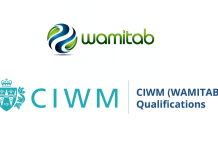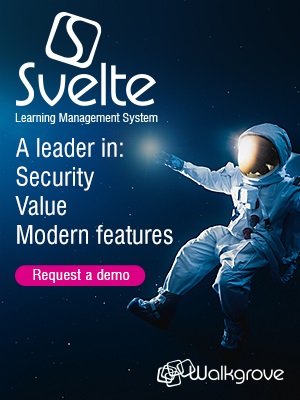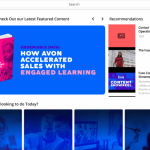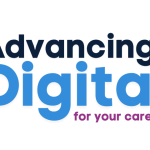Training Orchestra: an innovative and highly capable Training Resource Management System (TRMS) (that will make your LMS sing!).
I was very grateful to the team at Training Orchestra to be given access and an in depth demonstration of their Training Resource Management System in order to conduct this review. The first thing I learnt is that a TRMS is a long way from an LMS.
Secondly, I learnt that a TRMS – LMS integration could make a huge difference to an organisation in measuring and evidencing the impact and effectiveness of learning. Thirdly, I learnt that Training Orchestra is a very powerful platform designed to optimise all training provision in the organisation, not just elearning.
So what is a TRMS?
Training Orchestra is an enterprise standard platform for larger organisations seeking to measure and add value to training and reduce costs and inefficiencies in the process of training delivery. Training Orchestra will provide glaring transparency to budgets, attendance levels, results, costs, participation and more.
Training Orchestra will enable extended enterprise learning delivery as well. As more organisations see learning provision to supply chain partners, channel partners, distributors or franchisees as a revenue generation opportunity, Training Orchestra can really make the learning value chain work. It does so by identifying unnecessary costs that can be challenged and eliminated, and new potential revenues that can be configured based on the exceptionally granular data that many organisations would find to be a huge value-add from their training management software (TMS).
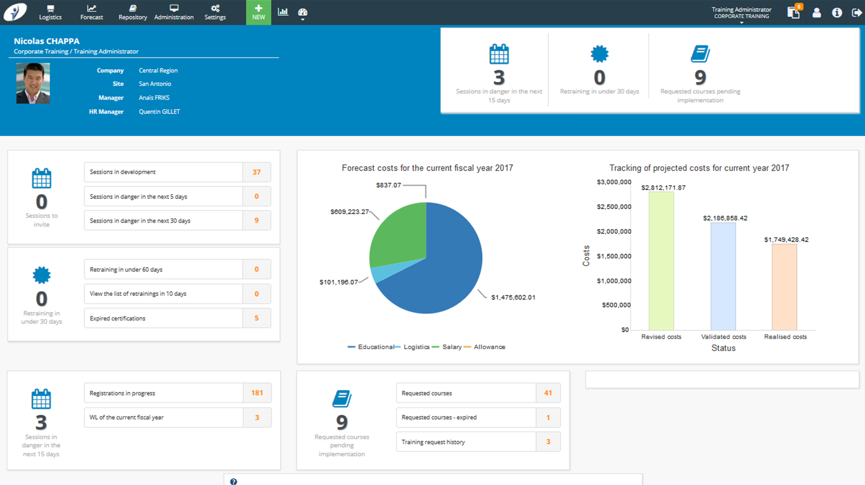
Training Orchestra is also ideally suited to larger training providers and training outsource partners (managed learning services) who seek to effectively manage multiple clients and providers and deliver efficiencies to their benefit and to their clients’ benefits.
In short, Training Orchestra is about making an L&D budget stretch much further and allowing budgets to be dynamically managed and flexed based on real time up-to-date data.
So what does this TRMS Training Orchestra actually do?
The organisation of resources is the fundamental platform from which Training Orchestra builds its analytical model and commences its efficiency drive. Resources are facilities and trainers and their courses, coaches, elearning courses and ancillary items required to deliver a live training course.
The management of logistics is a core element of the Training Orchestra approach in terms of costs of travel and organisational overheads, with users able to set up internal and external cost lines.
Courses can be quickly duplicated and set up of events (sessions) can be made quick and easy.
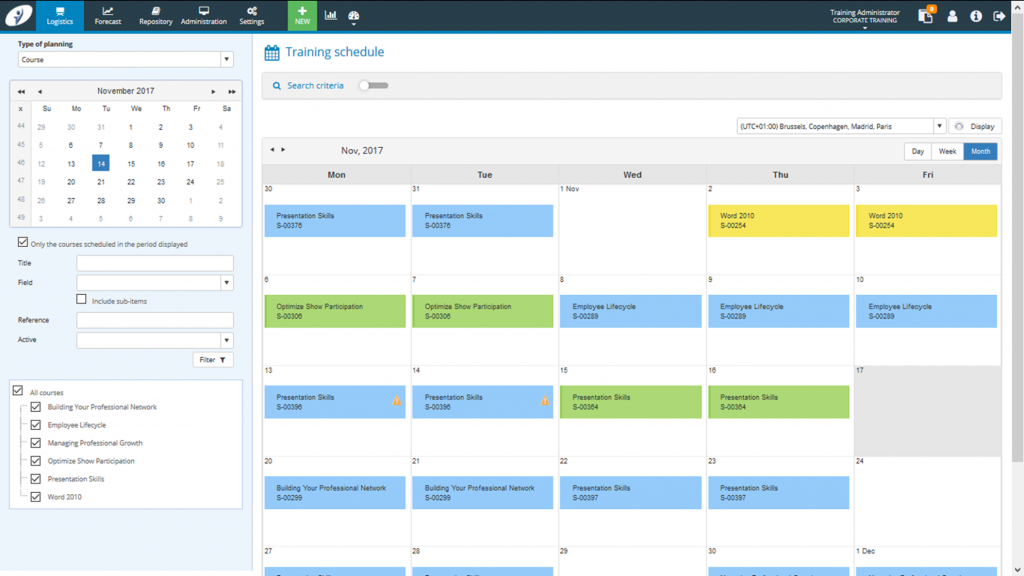
The system gets smart with its scheduling and availability management and the reporting on utilisation levels. Here efficiencies can be made or resources re-allocated from running poorly attended courses to courses that are oversubscribed. Smart Algorithms (dynamic management) quickly kick in and support decision making and help future planning to optimise future schedules.
The performance value of different instructors (internal or external providers) can be evaluated and managed on a cost metric and of course on a learner performance metric. Interesting and very useful, bringing a whole new meaning to performance management!
Cost control is at the heart of Training Orchestra and an organisation’s investment in training can be identified and analysed. Many countries (France for example) require organisations to allocate identified amounts of training to employees in relation to their salary: Training Orchestra can manage very complex models of training provision across multiple courses. This is a really well thought through system.
An Informative interface that makes training really responsive and manageable
Perhaps equally as interesting and impressive is the interface that makes this system really quite easy to use, the way that data can be viewed and interrogated. The UI is really quite neat.
All these variables (and indeed a lot more) are presented in a very easy to use interface that allows for users to instantly drill down for greater detail and information. Decision making is supported with recommendations to scheduling and resourcing. Reporting is naturally very comprehensive – no surprises there really. All in all, I was very impressed with the UI and UX and how much thought has gone into the platform to support those charged with administrating learning and development in an organisation.
Data consolidation
While a TRMS will not eliminate training administration overhead, it will certainly make it more efficient for the training admin team, it will consolidate data often held in spreadsheets various and other disparate repositories. Training administrators would find it very modern and refreshing compared to their home-grown tools they are using now to manage the training data.
Easy Integration
An increasing number of large companies have integrated Training Orchestra in their tech – stack with LMS and HRIS integrations (Training Orchestra appear to have a very open API and are genuine in their philosophy of integration). These integrations really do provide for the recording and optimising of learning aligned to organisational requirements and learner performance… the holy grail of L&D is enabled and delivered.
I get a very strong feeling that the integrations Training Orchestra are making with xAPI and LRS is going to be a major catalyst to the long foretold delivery of truly meaningful learning analytics for blended learning in the modern age.
High stakes learning assurance
Another particularly interesting use case for Training Orchestra is managing high stakes certification learning. The TMS actively manages certification and alerts organisations to numbers of certificated learners and expiry dates. Certificates and supporting documentation are held securely to ensure ISO audits can be carried out. Certification programmes can be tethered to particular skills requirements for specific pieces of equipment or processes.
While LMS integration is of huge value, blue collar workers who do not use PCs etc can still be accommodated in the TRMS. Training activities can be reported in real time in the TRMS. There is therefore no need for excessive LMS licenses purely to record instructor-led training (ILT).
To conclude
So to summarise this Training Orchestra review – firstly, TRMS is certainly not the same as an LMS. A learning management system integrated with a TRMS is a great solution for any organisation that offers a wide range of training and that really needs to understand the value of the training delivered and save money by driving efficiencies in its training provision.
A TRMS will manage internal and external training provision and exchange data with an LMS to ensure all genres of training are recorded and results analysed as well as managing the 75% of training budgets that are still spent on face to face training, therefore providing the complete picture.
The Training Orchestra TRMS will optimise all learning by managing learning and learners (schedules, assets, logistics and more) managing budgets (trainers, facilities, wage overhead) and provide real learning analytics… and just wait till the integrations with LRS using xAPI – that will be really exciting and insightful and will bring learning analytics to life.
Visit their website to learn more about Training Orchestra Solutions, customer success stories and a further background on this well-established, but exciting and innovative company.
If you happen to be at Learning Technologies 2018 in London on 31st January to 1st February, Training Orchestra will be on Stand D5 and happy to discuss your needs and demonstrate how they’ve helped 500+ organisations to optimise their training resources.

David Patterson
Lead eLearning Consultant
About David
Our lead elearning consultant David Patterson is an expert in training technologies such as learning management systems, and in elearning best practices.
He has helped many public and private sector organisations across the UK, Europe and worldwide to create and deliver engaging, effective elearning.
David is joint author of several research papers including the highly acclaimed Learning Light reports on the UK elearning market.


